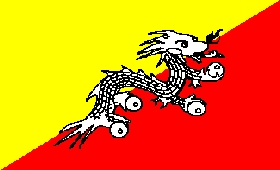|
|
|

|
Trade opportunities between India and Bhutan
|
|

|
| India and Bhutan have traditionally enjoyed a warm and cordial relationship |
| Top Stories |
 |
|
|
|
Anand Choudhary | 14 Mar, 2008
Bhutan, also referred to as Druk Yul (The land of the Thunder Dragon) is one of India's closest neighbours. It has an area of 46,500 square kilometre and houses a population of 7,00,000. It shares its border with the Tibet autonomous region of the People's Republic of China in the north and a 700 Km long border with the Indian States of Sikkim, Arunachal Pradesh, West Bengal and Assam to the south.India and Bhutan enjoy a close relationship based on trust and mutual understanding.
India and Bhutan have traditionally enjoyed a warm and cordial relationship. This traditional relationship has undergone some structural changes in recent times. Bhutan as the closest ally of India in South Asia, always supported India in the SAARC forums and toed Indian line at the United Nations and International forums. Compared to other bilateral relations in the South Asian region. Bhutan and India share traditional,warm, friendly and close bilateral relations – both at political and economic level.
On August 1, 2006 India and Bhutan inked a new Trade Pact for 10 years. The earlier trade pact had expired in March 2005. The pact gives the Himalayan nation Four new entry and entry and exit points. The pact also simplifies import and export between the two countries.
India's Total Export to Bhutan's worth Rs 57,177,928.00 Lakh in the year 2006-07 while the imports stood at Rs 64,000.12 lakh.
The main exportable commodities of Bhutan to India are cardamom, gypsum, timber, handicrafts, cement, fruit, electricity, precious stones and spices. Whereas,the main Importable commodities of the country are fuel and lubricants, grain, machinery and parts, vehicles, fabrics and rice.
When trying to export commodities to Bhutan, The main constraints faced by the exporters are the high costs of transport resulting from Bhutan's landlocked position, the difficult terrain, and limited transport infrastructure especially affecting the export trade. But high transport costs, inadequate infrastructure and services also affect internal trade.
According to Ms. Tshoki Choden, Second Secretary, Trade Wing of the Royal Embassy of Bhutan, "The Bhutanese govt. of late has been trying to overcome these problems by the construction of better infrastructural facilities including better roads, services and other facilities..."
India is also helping Bhutan by providing aid to develop better infrastructural facilities for the development of trade and commerce between the two countries.
The Trade Division, under the ministry of Trade and Industry consists of two sections, one for internal and one for external trade, the latter looking after both exports and imports. There are four Regional Trade and Industry Offices located at Thimphu, Phuntsholing, Gelephu and Samdrup Jongkhar. A trade Promotion Centre and Consumer Protection Units are also being developed. The Division works closely with the Bhutan Chamber of Commerce and Industry (BCCI).
The future of trade opportunities with Bhutan seems to be is bright as both the nations share traditional friendship and close economic ties.
|
|
|
| |
|
|
|
|
|
|
|
|
|
|
|
|
|
|
| |
| Customs Exchange Rates |
| Currency |
Import |
Export |
US Dollar
|
84.35
|
82.60 |
UK Pound
|
106.35
|
102.90 |
Euro
|
92.50
|
89.35 |
| Japanese
Yen |
55.05 |
53.40 |
| As on 12 Oct, 2024 |
|
|
| Daily Poll |
 |
 |
| Do you think Indian businesses will be negatively affected by Trump's America First Policy? |
|
|
|
|
|
| Commented Stories |
 |
|
|
|
|
|
| |
|